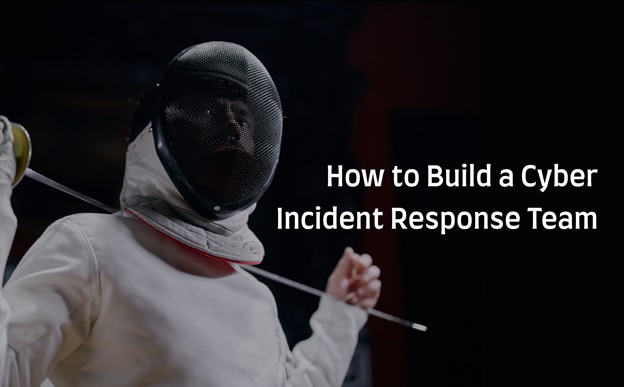

Unlock the Secrets of Web Scraping with Proxies: A Complete Guide
What’s a Proxy Server? The Low‑Down
Picture a proxy server as your internet’s secret handshake.
It sits between your computer and the web, whispers a request on your behalf, and then delivers the juicy data back to you. Think of it as a middle‑man: you keep your own address hidden while the world sees the proxy’s.
Why Should You Use Proxies for Web Scraping?
- Hide Your IP: Browsers and servers hate being stalked, so masking your real IP is like putting on a disguise for your code.
- Prevent IP Blocking: No one likes a picky scraper, especially if you’re sending dozens of requests. Proxies let you keep your crawling engine humming without getting temporarily (or permanently) banned.
- Beat Rate Limits: Those sites that impose “you can only hit us 200 times per hour” will happily hand over data to a rotating proxy army. Your scraper becomes a stealthy ninja that dodges every throttle.
How Many Proxies Do You Need?
It depends. If you’re scraping a single site with friendly limits, a handful of rotating proxies might suffice. For a heavy‑hitter operation—think millions of requests across dozens of domains—you may need a network of hundreds or thousands of proxies to stay under the radar.
Choosing the Right Type of Proxy
Not all proxies are created equal. Here’s the lineup:
- Residential Proxies: They come from real households. Best for sites that sniff for corporate IPs.
- Datacenter Proxies: Fast, cheap, and ready to deploy in bulk. Great for bulk crawling.
- Rotating Proxies: These automatically switch IPs after each request or every few minutes—your ticket to stealth.
- HTTPS Proxies: Secure, encrypted tunnels—essential if you’re dealing with sensitive data.
One Last Piece of Advice
Always pair your proxies with respectful crawling practices: pause between requests, respect robots.txt, and keep a polite tone with server admins. Remember, the internet is a community—treat it with courtesy, and your scraper will thrive without the drama.
What is a proxy server?
A Proxy Server: Your Digital Middle‑Man
Think of a proxy server as that friendly neighbor who brings your groceries right on your doorstep. Instead of shuffling through the crowded streets of the internet, the proxy whizzes around, fetches the stuff you need, and then hands it back to you. It’s basically your covert agent in the vast web jungle.
How It Works in Plain English
- Direct Game: You fire up your browser, type a URL, and boom—your computer talks straight to the web server. The server spits back the page, and you’re off.
- Proxy Party: In this scenario, the computer first whispers its request to the proxy. The proxy rides the internet highway, exchanges a few digital handshakes, grabs the page, and then slides it back to your device.
Why You Might Want One
- Privacy & Anonymity: Your IP address stays hidden because the server speaking to the outside world is the proxy, not you.
- Access Control: Schools and offices toss out a list of “favourite sites” you can visit—thanks to the proxy’s filtering powers.
- Speed Boosts: The proxy can cache popular pages, so next time you ask for the same thing, it zips it out of its memory—faster than a squirrel on a raccoon’s back.
Bottom Line
A proxy server is your trusted middle‑man on the internet, making sure your requests reach their destination safely and efficiently, all while keeping your digital footprints as light as a feather.
Why should you use proxies for web scraping?
Why the Right Proxy Gives Your Scrape an Edge
Think of a proxy server like a super‑secret handshake for the web. Swapping the best proxy into your scraping toolkit turns that handshake into a smooth jazz solo. Here’s why it matters:
1. Masking Your Identity – No More “Oops, we’ve flagged you”
- Your IP shuffles like a deck of cards—each request looks fresh.
- Those pesky 429 errors? Bye‑bye.
2. Speed & Reliability – Because a slow scrape is a bad mood.
- Fast lanes to data with minimal latency.
- Ping‑friendly connections that keep on humming.
3. Geographic Flexibility – Pretend you’re everywhere at once.
- Access region‑locked content with a single click.
- Testing websites as if you live in Tokyo, Paris, or Berlin.
4. Cost Efficiency – Cheaper than a cup of coffee a day.
- Subscription models that scale with traffic.
- No need to break the bank for custom IPs.
5. Legal & Ethical Peace of Mind – Stay on the right side of the law.
- Proxies stay compliant with data‑usage rules.
- Less chance of getting your account flagged or banned.
Bottom line: a top‑tier proxy is less like a secret agent and more like a stealth‑superhero, letting you surf the web with speed, safety, and a dash of flair. Ready to power up your scraping game?
1. Hide your web scraping machine IP’s address
Why a Proxy Is Your New Online Secret Agent
Think of your public IP address as that unmistakable selfie you take with your phone every time you visit a website. Without a proxy, that selfie is posted on the “public gallery,” and the world can see exactly where you’re surfing from.
Enter the proxy server. It’s like a cloak that drapes over your digital footprints, turning the “live camera” into a blurry, anonymous silhouette.
The Big Wins
- Anonymous Browsing – No one can trace your clicks back to your real address.
- IP Masking – Your actual IP gets swapped for the proxy’s own, so the world sees a different “you.”
- Privacy Matters – Whether you’re streaming, shopping, or just Netflix‑watching, the bad‑guy ads don’t get to see the real you.
So, next time you surf the web, think of a proxy as the invisible cape keeping your online identity just for you. Stay stealthy, stay safe, and let the internet do its thing without the paparazzi peeking at your address.
2. Help you prevent IP blocking
Invisible Scrapers: A Sneaky IP Tango
Picture this: you’re a digital detective, tip‑to‑toe through a web page, gathering data faster than a kettle can whistle. Your problem? The target site is like a vigilant guard dog that keeps an eye on every IP that comes knocking. But here’s the twist – your scraper is practically invisible to the guard.
Why the Guard Can’t Spot You
- Your scraper claims no identity – It doesn’t show up as a regular user. Think of it as a ghost that waltzes through the front door without leaving a fingerprint.
- The site’s anti‑bot filters only recognize real IPs – They’re great at spotting human traffic but not at tracking your phantom bot.
- Speed matters – Your crawler moves faster than the guard can note the IP, so by the time it’s done, the guard is already on the way to the next building.
But Wait! The Guard Takes a Different Approach
When the guard can’t tag the fingerprint, it goes after the proxy – the temporary address you’re using to cast a veil over your real IP. The proxy shows up on their radar like a mischievous under‑cover partner.
What That Means for You
- Blocked Proxies, Not Your Real IP – If the guard blocks your proxy, then any scraper using that same proxy will get the cold shoulder. Your real IP remains safe…for now.
- Proxy Rotation is the Key – Think of it like wearing a different disguise for each visit. The more varied your disguises, the harder it is for the guard to track you.
- Balance is Crucial – Switching proxies too often can raise red flags. Treat your changes like a subtle shuffle rather than a flip‑flop.
Turning the Tables: Your Playbook
- Use rotating proxies that mimic genuine user traffic (randomized user‑agents, intermittent delays, etc.). You’ll look like a normal visitor.
- Set modest request rates. A frantic crawler that spams requests is a sure giveaway.
- Introduce human‑like behavior – scrolls, page views, time spent on pages. These tiny habits make you less suspicious.
- Keep an eye on proxy health. If a proxy starts sending errors, consider swapping it out.
- Consider home‑grown solutions – host your own proxies or use virtual mini‑servers. The more control you have, the smoother you can go.
Final Takeaway
When your scraper’s IP is invisible, the target site’s biggest weapon is the proxy address. It’s not foolproof, but it’s close enough that you should keep your tools tight and your moves clever. Think of it as a game of hide and seek with a savvy seeker – if you stay unmarked, you’ll be just fine. If you’re caught, the ban will be on your proxy, but that’s a correction you can manage. So, swap, wait, repeat – hey, keep it smooth, keep it real. Happy scraping!
3. Help you get past limits on the target sites
Why Big Sites Tighten Their Gatekeepers
Most of the big names on the web use intelligent software to keep a curb on how many times a user can poke their servers in a short amount of time. If a single IP starts sending a flood of requests, the system spots it, throws a friendly “slow down” message, and might even block that IP from making any more calls. It’s like a digital bouncer keeping out the rowdy crowd.
Feeling the Price of Speed?
When you’re trying to harvest a mountain of data from a hefty target site in barely a few minutes, the rate limits will bite. You’ll find yourself stuck in a loop of errors, waiting, and waiting again.
Enter the Proxy Squad
- Proxies act like a secret underground network of mailing addresses.
- They distribute your requests across many different IPs, tricking the target into thinking they’re coming from a diverse swarm of users.
- By doing so, your traffic stays under the radar, staying comfortably below the site’s throttle. No more pesky error messages.
In short, using proxies is your fast‑track to data without getting caught in the rate‑limit trap. Just remember to shuffle those IPs to keep the “bouncer” guessing. Happy scraping!
How many proxies do you need?
How to Tame the Web’s Speed Limits
Let’s be real—figuring out how fast a website will let you hit its end‑points is a bit like trying to steal pizza without getting caught. If you don’t know the exact algorithm the site uses to throttle traffic, the only playbook left is smart guessing.
Think Human, Behave Human
- A typical human waves a finger and fires off about 5–10 requests per minute.
- That works out to roughly 300–600 requests in an hour.
- Websites usually back off at numbers around that ballpark.
Keep Your Proxies on a Diet
Give each proxy a cap of 600 requests per hour. If your machine can chew through 60,000 URLs in 60 minutes, you’re looking at 100 proxies to stay under the radar.
Putting It All Together
When you stack proxies and throttle your own requests, you’re playing a tight game of request roulette. Reach the target number, and you’ll keep your scraper humming without the site putting its hand on the burner.
Which proxy servers should I use?
How to Leverage Smartproxy’s “Proxies on Steroids”
Smartproxy just dropped its newest masterpiece: the SERP Scraping API. Think of it as a turbo‑charged combo pack that blends a massive proxy network (over 40 million residential & datacenter nodes), a battle‑tested web scraper, and a ninja‑level data parser all in one.
Why this is a game changer
- Any search engine or e‑commerce target – Google, Bing, Amazon, Shopify… you name it.
- Global coverage – pick your country, state, or even zip code, and the API rings up the data for you.
- Zero hassle – raw HTML or clean JSON? Whatever you’re comfortable with.
- Guaranteed 100% success rate – no more dead ends or time wasted on retries.
Key Perks That Keep You Smiling
Besides the obvious tech magic, Smartproxy gives you:
- Automatic IP rotation – stay anonymous and keep the IPs fresh.
- 24/7 support – a friendly team to help you out whenever you hit a snag.
- User‑friendly interface – no need to wrestle with complex settings.
The entry price? $100 + VAT for 35,000 solid requests, complete with a 3‑day money‑back guarantee if you’re not thrilled—pretty reasonable for such a robust service!
Don’t Forget WINTR: The Other Side of the Coin
If you’re looking for a sidekick, WINTR is the answer. With a hefty stack of residential proxies, it lets you undercover your scraping operations from anywhere, keeping your requests from getting blocked. Think of it as the “big data” extra that wraps proxying and web scraping into a single power package.
Interested in trying it out? Check out WINTR at https://www.wintr.com/.







